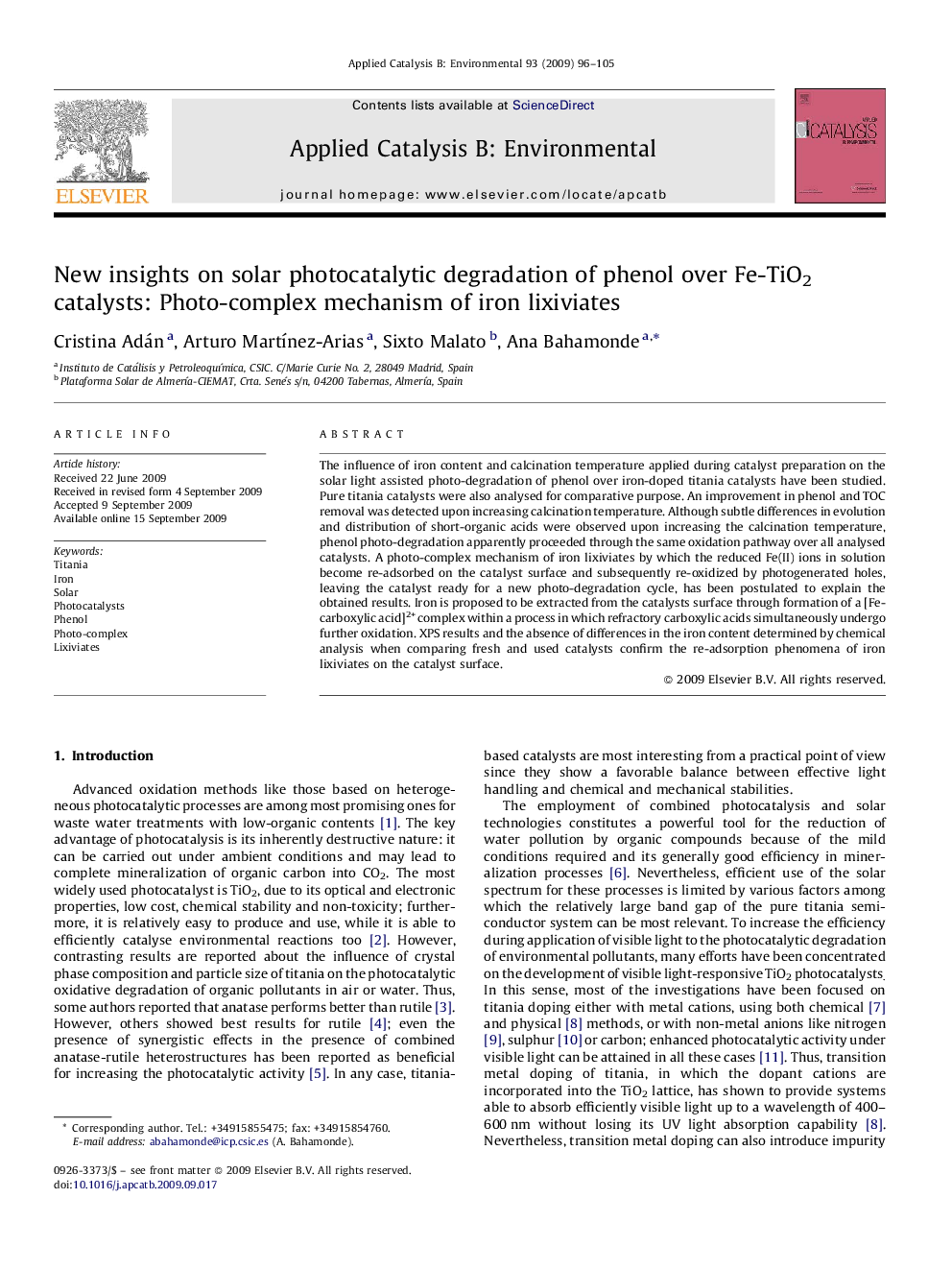| Article ID | Journal | Published Year | Pages | File Type |
|---|---|---|---|---|
| 47352 | Applied Catalysis B: Environmental | 2009 | 10 Pages |
The influence of iron content and calcination temperature applied during catalyst preparation on the solar light assisted photo-degradation of phenol over iron-doped titania catalysts have been studied. Pure titania catalysts were also analysed for comparative purpose. An improvement in phenol and TOC removal was detected upon increasing calcination temperature. Although subtle differences in evolution and distribution of short-organic acids were observed upon increasing the calcination temperature, phenol photo-degradation apparently proceeded through the same oxidation pathway over all analysed catalysts. A photo-complex mechanism of iron lixiviates by which the reduced Fe(II) ions in solution become re-adsorbed on the catalyst surface and subsequently re-oxidized by photogenerated holes, leaving the catalyst ready for a new photo-degradation cycle, has been postulated to explain the obtained results. Iron is proposed to be extracted from the catalysts surface through formation of a [Fe-carboxylic acid]2+ complex within a process in which refractory carboxylic acids simultaneously undergo further oxidation. XPS results and the absence of differences in the iron content determined by chemical analysis when comparing fresh and used catalysts confirm the re-adsorption phenomena of iron lixiviates on the catalyst surface.
